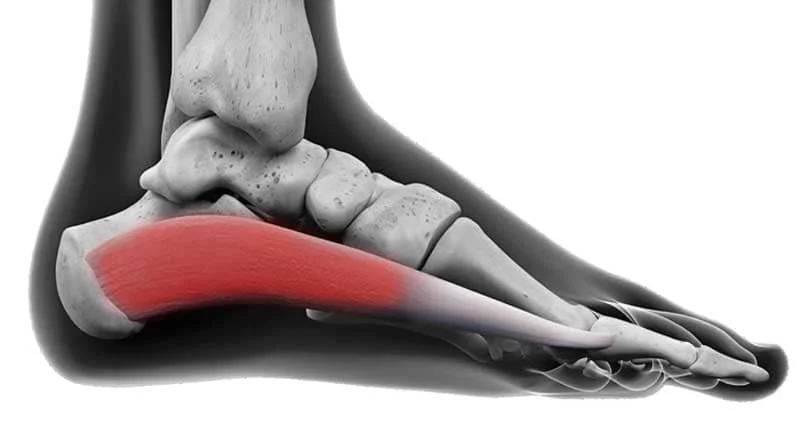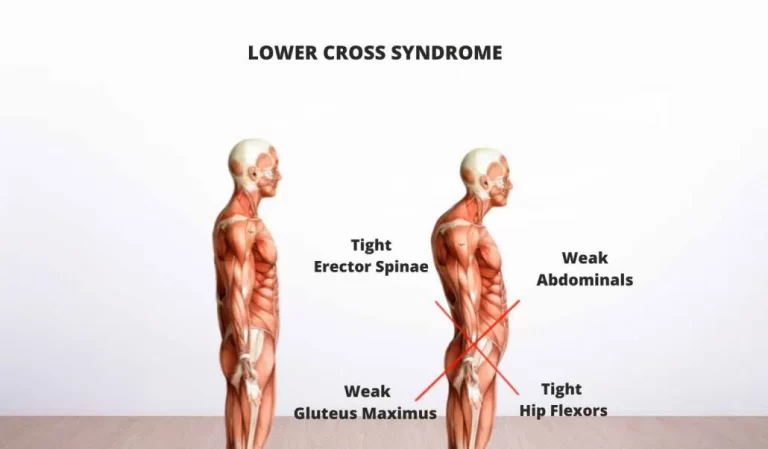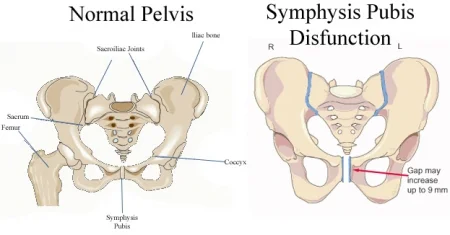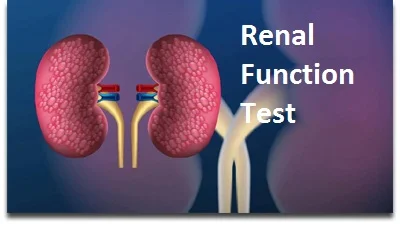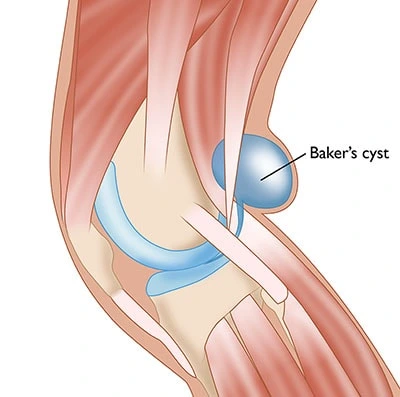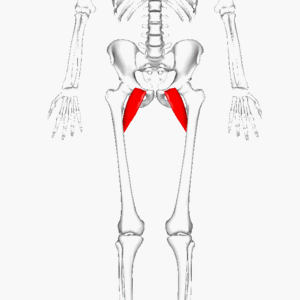Abductor Hallucis Tendinopathy
Table of Contents
What is an Abductor hallucis tendinopathy?
Abductor hallucis tendinopathy refers to a painful condition affecting the abductor hallucis muscle, which is located on the medial side of the foot. The abductor hallucis muscle plays a crucial role in stabilizing the foot and assisting in movements such as walking, running, and balancing.
Tendinopathy is a term used to describe any abnormality or damage to a tendon, which can result from overuse, repetitive stress, or sudden injury.
Related Anatomy
One of the intrinsic muscles of the foot is the abductor hallucis, which is situated on the medial side. It comes from the flexor retinaculum, a thick band of connective tissue that runs between the calcaneus and the medial malleolus, and the calcaneal tuberosity. After there, the muscle fibers run down the foot’s medial longitudinal arch, entering at the proximal phalanx of the great toe and the medial sesamoid.
Functionally, the big toe’s flexion and abduction are controlled by the abductor hallucis muscle. It aids in maintaining the foot’s medial longitudinal arch, supports stable weight bearing, and makes appropriate weight distribution during stride easier.
The fibrous tendon that connects muscle to bone is called the abductor hallucis tendon. It is crucial for transferring the forces produced by the muscle to the bones, allowing for coordinated movement and stability, and it runs along the medial portion of the foot.
Causes of Abductor Hallucis Tendinopathy
Numerous internal and external events that put the abductor hallucis tendon under undue tension or strain can cause abductor hallucis tendinopathy. Typical reasons and aggravating factors could be:
Overuse:
Prolonged walking, running, or dancing are examples of repetitive activities that put excessive strain on the abductor hallucis tendon, which can cause microtrauma and inflammation.
Poor biomechanics
Foot structural anomalies, including pes planus or pes cavus, can change how weight is distributed and put more strain on the abductor hallucis tendon, making it more vulnerable to damage and degeneration.
Injury
Tendon damage and subsequent tendinopathy can result from direct trauma or injury to the foot, such as a quick impact, an extremely forceful blow, or repetitive microtrauma from movements like jumping or landing.
Footwear
Unusual shoe fitting or inadequate support might cause abnormal stress on the abductor hallucis tendon, which can accelerate the onset of tendinopathy.
Age-related changes
Aging-related degenerative changes can weaken the abductor hallucis tendon, increasing its vulnerability to injury and inflammation. These changes include decreased tendon suppleness, decreasing blood flow, and progressive wear and tear.
Symptoms of Abductor Hallucis Tendinopathy
Depending on how severe the problem is, the symptoms of abductor hallucis tendinopathy usually appear gradually and can change in intensity. Typical indications and symptoms include of:
Abductor hallucis Pain
Patients frequently report pain along the medial portion of the foot, especially in the area where the abductor hallucis tendon attaches. Prolonged weight-bearing or activities that require pushing off the big toe may exacerbate the pain.
Tenderness
Palpation of the abductor hallucis tendon reveals tenderness and sensitivity, particularly when it insertion point is on the medial side of the foot.
Swelling
A sense of fullness and localized swelling may result from abductor hallucis tendon inflammation.
Big Toe Joint Stiffness
It can be difficult for people with abductor hallucis tendinopathy to carry out tasks that call for appropriate toe flexion and extension due to a reduced range of motion in the big toe.
Abductor hallucis Muscle weakness
An unstable or weak foot can impact balance and general movement when the abductor hallucis muscle weakens as a result of tendon disease.
Altered gait
In order to reduce pain and discomfort when walking, people with abductor hallucis tendinopathy may alter their gait patterns, favoring the lateral portion of their foot or avoiding placing weight on the affected foot.
Diagnosis
When diagnosing abductor hallucis tendinopathy, a comprehensive evaluation is usually conducted to rule out other possible causes of foot discomfort and establish the presence of tendon pathology. This evaluation includes imaging studies in addition to a thorough clinical assessment.
Treatment of Abductor Hallucis Tendinopathy
The goals of abductor hallucis tendinopathy treatment are to lessen discomfort, lessen inflammation, encourage healing, and return normal function to the foot. The following conservative and interventional strategies may be advised, depending on the severity of the condition:
Rest and activity modification
Reducing stress on the injured tendon and facilitating its healing and recovery can be achieved by limiting or changing activities that worsen symptoms.
Ice therapy
Pain and inflammation can be lessened by applying ice packs (Cryotherapy) to the injured region. Applying ice therapy for 15 to 20 minutes many times a day, especially after activities that could exacerbate symptoms, is highly beneficial.
Pain-Relieving Medicine
Abductor hallucis tendinopathy-related discomfort and inflammation can be lessened with the use of oral NSAIDs like ibuprofen or naproxen. However, before beginning any drug regimen, it is imperative to speak with a healthcare professional.
Orthotics and supportive footwear
The abductor hallucis tendon can be less stressed by using orthotic devices, such as arch supports or custom-made insoles, which can assist provide the foot extra support and cushioning. Moreover, supportive shoes with sufficient cushioning and arch support might help reduce symptoms and stop them from coming again.
Corticosteroid injections
Corticosteroid injections may be taken into consideration in cases of chronic pain and inflammation in order to lessen local inflammation and offer temporary pain relief. In spite of this, corticosteroid injections should only be used sparingly due to the possibility of tendon rupture and weakening.
Surgical intervention
Surgical surgery, such as tendon debridement or repair, may be explored to address severe tendon disease and restore normal foot function in chronic situations where conservative approaches have failed.
The intensity of the symptoms, the person’s general health, and the particulars of the tendinopathy all influence the therapy option. A thorough and individualized treatment plan, frequently combining several of the abovementioned modalities, is essential to achieving favorable results and enabling an immediate return to regular activities.
Physiotherapy Treatment in Abductor Hallucis Tendinopathy
In order to treat abductor hallucis tendinopathy comprehensively, physical therapy is essential. To treat muscular imbalances and anomalies in gait, a physical therapist may provide targeted exercises and therapies to enhance foot strength, flexibility, and biomechanics. The following are some typical physical therapy procedures and exercises for abductor hallucis tendinopathy:
Electrotherapy Modalities
When used in conjunction with physiotherapy techniques, electrotherapy methods can effectively reduce pain and hasten the healing process. The following are some electrotherapy techniques that are frequently used to treat pain caused by abductor hallucis tendinopathy:
- Transcutaneous Electrical Nerve Stimulation (TENS)
- Interferential Current Therapy (IFT)
- Ultrasound Therapy
- Pulsed Electromagnetic Field Therapy (PEMF)
Exercises
Stretching exercises:
Enhancing flexibility and lessening the load on the abductor hallucis tendon can be achieved by stretching the calf muscles, Achilles tendon, and intrinsic foot muscles. Toe, Achilles, and calf stretches are a few types of stretches that work well.
Strengthening exercises
Exercises that specifically strengthen the abductor hallucis and other intrinsic foot muscles can assist increase the stability and support of the feet. Toe flexion, toe curls, toe-ups with marbles, and resistance band workouts for foot abduction and adduction are a few possible activities.
Manual therapy
Myofascial release techniques, joint mobilization, and soft tissue mobilization can all aid in releasing tight muscles, increasing blood flow, and improving foot flexibility—all of which can lead to less discomfort and better function.
Balance and proprioception training
Exercises for improving balance, like single-leg stances or balance boards, can assist increase the stability and proprioception of the foot, lowering the likelihood of repeat injuries and encouraging good foot mechanics when bearing weight.
Gait retraining
A key part of the rehabilitation process is analyzing and correcting any aberrant gait patterns. Improved walking and running mechanics, appropriate weight distribution, and reducing undue strain on the abductor hallucis tendon during ambulation are the main goals of gait retraining exercises.
Preventive Measures
Proactively reducing the likelihood of excessive strain and injury to the abductor hallucis tendon is necessary to prevent abductor hallucis tendinopathy. The following are some practical methods for stopping the onset or recurrence of this condition:
Use of Proper footwear
When engaging in weight-bearing exercises, it might be beneficial to maintain appropriate foot biomechanics and lessen the pressure on the abductor hallucis tendon by wearing supportive, well-fitting footwear with sufficient arch support and cushioning.
Proper warm-up and cool-down
Incorporating a thorough warm-up regimen prior to physical exertion and a post-exercise cool-down session can facilitate optimal muscle and tendon healing, hence reducing the likelihood of overuse injuries.
Maintaining a healthy weight
Reducing the overall load on the feet and lower limbs by maintaining a healthy body weight will help lessen the risk of excessive strain and injury to the abductor hallucis tendon during weight-bearing activities.
Stretching and strengthening exercises
Frequent stretching and strengthening activities for the calf and foot muscles can help increase muscle strength, improve flexibility, and lower the risk of tendon overuse and injury.
Conclusion
A painful condition known as abductor hallucis tendinopathy affects the abductor hallucis muscle in the foot. It is frequently caused by biomechanical imbalances, inappropriate footwear, or overuse. Pain and discomfort around the inner arch of the foot are common symptoms, particularly when pushing off the ground is involved. Nonsteroidal anti-inflammatory medications, rest, ice, compression, and elevation are common forms of treatment.
Physiotherapy interventions have the potential to alleviate pain and facilitate recovery, such as electrotherapy methods such as TENS, IFT, ultrasound therapy, and PEMF. For the purpose of controlling symptoms and regaining normal foot function, an early diagnosis and thorough therapy are essential.

